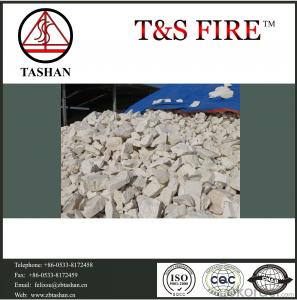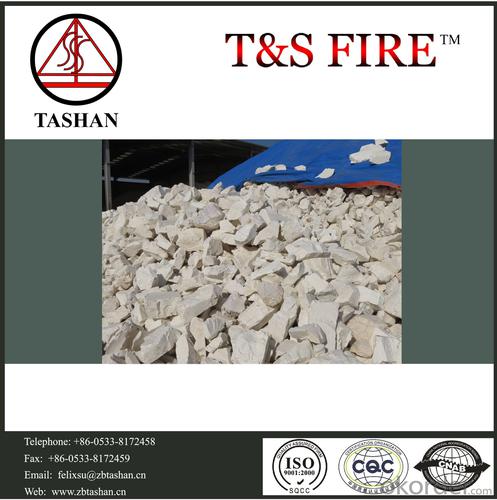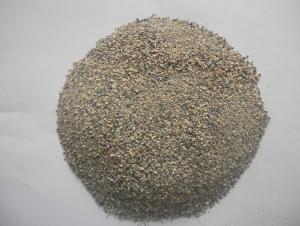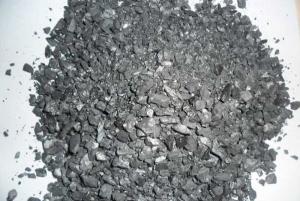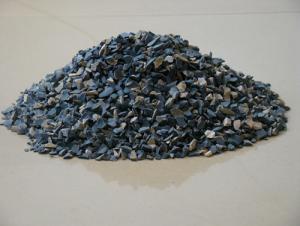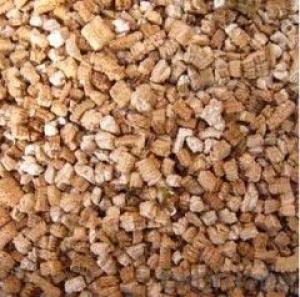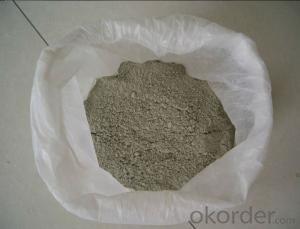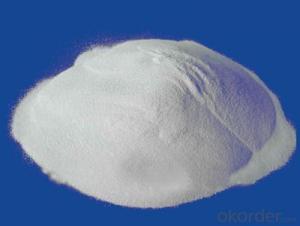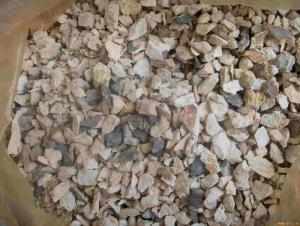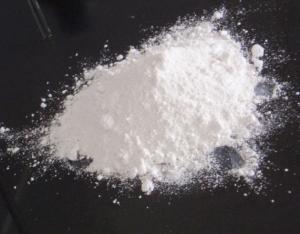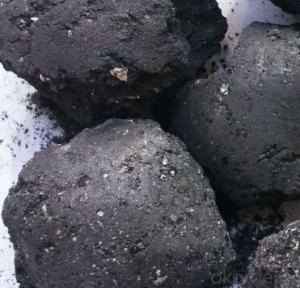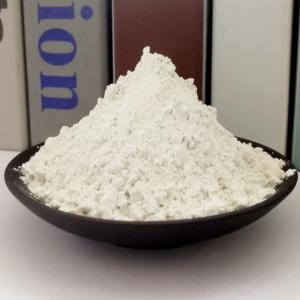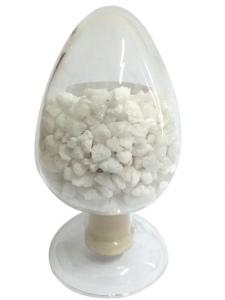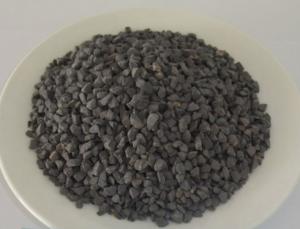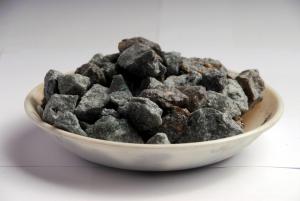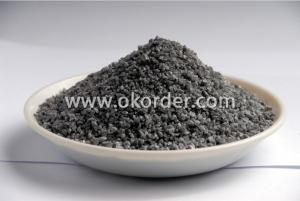Calcined Flint Clay
- Loading Port:
- Qingdao
- Payment Terms:
- TT OR LC
- Min Order Qty:
- -
- Supply Capability:
- 800T m.t./month
OKorder Service Pledge
OKorder Financial Service
You Might Also Like
Calcined flint clay has been processed through a series of procedures, such as remove impurities, magnetic-selected to move iron and spraying drying etc. Water-washed kaolin has been used very effectively as functional filler in ceramic and so on.
Calcined flint clay is mainly used for manufacturing high-quality refractory products, refractory castable, sagger, kiln furniture, crucibles, ceramic fiber, precision casting sand, ceramics products, etc.
Features of calcined flint clay:
High refractoriness.
Physicochemical stability.
Volume density high.
Low porosity.
Low water absorption.
Fully calcined.
Low impurity content.
Pure white.
Specifications of calcined flint clay:
Size of particles: 0-1mm, 1-3mm, 3-5mm, 5-8mm, 8-15mm, 0-5mm, 0-50mm.
Size of sand: 8-16, 16-30, 30-60, 30-80, 60-80, 80-120 (mesh).
Size of powder: -200mesh, -270mesh, -325mesh.
Physical and chemical index of calcined flint clay:
| Item/Grade | YNS45 | YNS45 | YNS44 | YNS44 | YNS43 | YNS42 | YNS40 | YNS36 |
| A | B | A | B | |||||
| Al2O3 % | 46-48 | 45-48 | 44-48 | 44-48 | 43-48 | 42-46 | 40-46 | 36-42 |
| SiO2 % | 49-52 | 49-52 | 50-53 | 50-53 | 50-53 | 50-53 | 50-54 | 50-55 |
| Fe2O3 % (max) | 1.0 | 1.15 | 1.3 | 1.5 | 2.0 | 2.5 | 3.0 | 3.5 |
| TiO2 % (max) | 0.8 | 0.8 | 0.9 | 0.9 | 1.0 | 1.1 | 1.2 | 1.3 |
| K2O+Na2O % (max) | 0.3 | 0.3 | 0.4 | 0.4 | 0.4 | 0.5 | 0.5 | 0.6 |
| Ca0+Mg0 % (max) | 0.5 | 0.5 | 0.5 | 0.5 | 0.5 | 0.6 | 0.7 | 0.8 |
| Bulk density g/cm3(min) | 2.58 | 2.55 | 2.52 | 2.50 | 2.45 | 2.40 | 2.37 | 2.30 |
| Refractoriness °C(min) | 1780 | 1770 | 1760 | 1750 | 1740 | 1720 | 1710 | 1700 |
| Impurities % (max) | 0.5 | 1.5 | 2.0 | 2.5 | 3.0 | 3.5 | 4.0 | |
- Q: Who knows what is the standard of insulation material whose fire proof is level A?
- Level A is distinct from B in coefficient of fire proofing. Level A is non combustible, while Level B is divided into B1( flame retardant), B2(combustible) and B3( inflammable). Currently in the market, level A materials are as follows: phenolic, rock wool, insulation mortar, ceramic foam, foam glass, and foamed concrete. The most advantageous of level A material at present is foamed concrete, also known as foamed cement. Xuzhou Lvchuang Construction company is working on this, you can search fro it on the internet, it has high cost performance.
- Q: What are the requirements of refractory temperature of refractory brick?
- Refractory temperature of refractory brick is 1650 degree.
- Q: What dose the fireproof and thermal insulation material include?
- Currently the non-combustible insulation materials for external insulation system mainly are foam insulation board, composite cement foam insulation board, aerated concrete panels, rock wool board (strip), and inorganic insulation materials. 1. foam insulation board refers to foam ceramic insulation panels whose raw material is inorganic ceramic which is calcinated at high temperature with abbreviation of ceramic insulation board 2.Composite cement foam insulation board is a hydrophobic lightweight closed-cell insulation board whose main materials are cement, fly Ash, and silica fume which has been foamed, cured and cut. 3. aerated concrete panel is a lightweight concrete panel which has been autoclaved with lightweight materials, siliceous material and gas former as its raw materials. 4. rock wool panel, with natural igneous rock wool as its main raw material, is a cotton which is melted in high temperature by centrifugation and is pasted by thermosetting resin.
- Q: What things and cement mixed can act as refractory?
- Cement acts as cementing material. Itself works by refractory aggregate and stir the refractory material for its gelling refractory aggregate both should be fire-resistant.
- Q: What high-molecular polymers can be used as fire-resistant material binder?
- Lignin is the least expensive.
- Q: what needs to be noted when choosing and using blast furnace fireproof materials?
- it depends on the size of the blast furnace. below 200 cubic meters alumina bricks and carbon brickcan be used. 200 cubic meters and above are currently integrated bottom, not the same as the size of the cubic level, varying in the use of refactory. I hope my answers above are helpful to you and your ideal anwers.
- Q: Who can tell somthing about how to choose fire resistant rating of fire resistance rolling shutter doors?
- There is no necessary connection between them. Different fire resistant ratings of bulidings require different fire endurance of different elemements of buildings. According to the fire endurance, fireproof doors can be divided into A-grade, B-grade and C-grade, whose fire endurance should not be less 1.2h, 0.9h and 0.6h respectively. A-grade fireproof doors can be even applied to the material whose fire resistant rating is at secondary level. "Building Regulations" mention that fire resisting shutter can be used as partition of fire?compartment in those places where setting firewalls is not so easy. When using fire resisting shutter whose fire endurance doesn't include unexposed surface temperature rise, it should install closed independent automatic sprinkler system for protection on both sides, and the sprinkler sholud last at least 3 hours.
- Q: How to choose the material of refractory?
- Long using temperature of aluminum oxide fiber is 1400 ℃, containing chromium aluminum silicate fiber, quartz, high purity aluminum silicate fiber, long-term use of temperature is 1000-1200 ℃ has aluminum silicate refractory fiber according to different raw materials, advanced refractory fiber (such as alumina. Commonly used vitreous aluminum silicate refractory fibre is amorphous, zirconium oxide refractory fibre) using temperature is 1700 ℃ view as >and the best temperature is 1300 ℃. Crystalline refractory fiber are polycrystalline mullite fiber, including ordinary aluminum silicate fiber, alumina and graphite refractory fiber, etc. The use of common refractory fiber temperature is 1150 ℃;>
- Q: What are the requirements on fire resistance period of C-level fireproof glass?
- What are the requirements on fire resistance period of Class C fireproof glass? The fireproof glass is a special glass which can maintain its integrity and insulation in required fire resistance tests, it can be classified into three types: Class A the fireproof glass which meet demands of fire integrity, and fire insulation at the same time. This glass has advantages of excellent transmittance, fire-proofing(smoke resistance, fire insulation, and blocking heat radiation), sound insulation and impact resistance. It can be applied to architectural ornaments, fire resistant timber doorsets with steel structure, windows, upper beam, partition walls, daylighting roofs, ceiling screens, perspective floor and other building components which need transparency and fireproofing. Class B: The fireproof glass which meets demands of fire integrity and thermal radiation intensity at the same time. This glass is mostly composite fireproof glass which has advantages of transmittance, fireproofing, and smoke resistance. Class C: The fireproof glass which only meets demand of fire integrity. This glass has advantages of transmittance, fireproofing, smoke resistance and high intensity. It can be applied to fireproof glass partition walls, fire windows and with no requirements on outdoor curtain walls, etc. The fireproof glass can be classified as composite fireproof glass and single chip fire-proof glass in terms of structure.
- Q: How to divide the fire resistant level of construction thermal insulation materials?
- Combining three versions of GB8624 (1997,2006,2011), external wall thermal insulation fire?rating can be basically divided into: A1, A2, B1, B2, B3 and other levels. There are many technical indexes for specific division. And it is mainly determined in accordance with the national standard GB8624 Building materials combustion levels.
Send your message to us
Calcined Flint Clay
- Loading Port:
- Qingdao
- Payment Terms:
- TT OR LC
- Min Order Qty:
- -
- Supply Capability:
- 800T m.t./month
OKorder Service Pledge
OKorder Financial Service
Similar products
Hot products
Hot Searches
Related keywords
